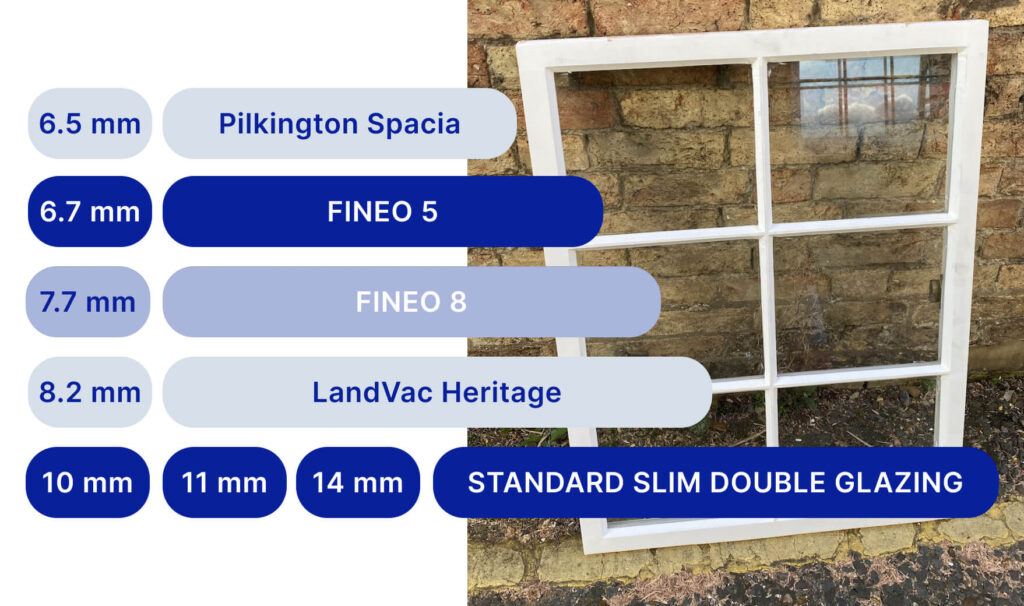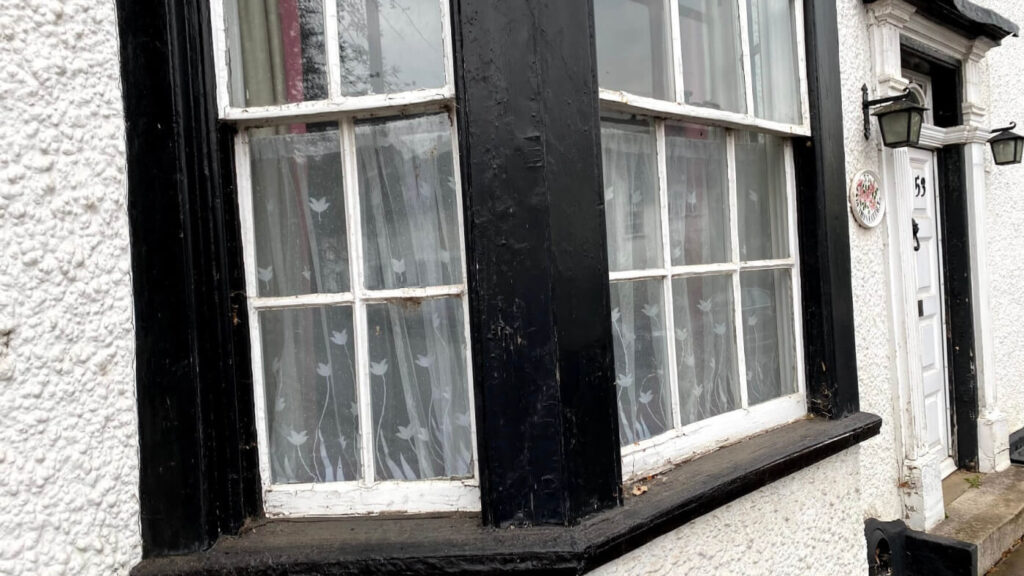
The thinnest double-glazing options are FINEO 6 and Pilkington Spacia, which are only 6.7 mm and 6.5mm thick.
Both are Vacuum-Insulated Glazing units (VIG). They eliminate the need for spacer bars, further narrowing the sightlines and making them perfect for restoration projects.
In this article, we will primarily focus on comparing FINEO VIG with other thin double-glazing options, as Pilkington Spacia is not as common and features an evacuation port that significantly limits its use in period and historic properties.

Other VIG products are also thin enough for reglazing original windows, such as LandVac, which is 8.3 mm thick. However, since this article is about the thinnest double-glazing options, let’s focus on FINEO Glass 6.
U-Value & Thermal efficiency of thinessed double glazed units
There are a few factors that affect the thermal performance of thin double glazing.
The first one is whether the glass panes have a Low-e coating and how the cavity is insulated, whether it is gas-filled or vacuum-insulated.
The U-Value of vacuum insulated glazing units can go as low as 0.5 / 0.7 (W/m²K). For comparison, single glazing has a U-Value of 5.8 (W/m²K), and conventional thin-profile double glazing units have a U-Value ranging from 1.2 to 1.9 (W/m²K).
Ideal for period properties and Historic buildings with original sashes
Thin double-glazing units are primarily used by sash windows restoration companies and businesses specializing in replicating historic windows.
Our team employs thin double-glazing in sash window projects, upgrading existing single-glazed units with Vacuum Insulated Glazing (VIG) glass.
This approach enhances the energy efficiency of original wooden windows and Listed properties while preserving their authentic appearance.
Designed for Slimness: The Technology Behind Thin Double Glazing
When exploring the slim double-glazing options available on the market, two main technologies stand out. The first is standard double glazing, which includes two panes of glass spacer bar and gas between the glass panes, usually Argon or Krypton gas, to enhance thermal insulation properties.
This standard double-glazing technology is the most common due to its cost-effectiveness and ease of production. Many articles address the gas leakage rate. While we won’t dive deeply into the reasons, it’s important to note that this technology does not lend itself to producing durable slim glazing units.
The second technology is Vacuum Insulated Glazing (VIG), a form of double glazing characterized by an extremely narrow cavity width, no more than 0.3 mm, between the glass panes, which inherently makes it thinner. Vacuum Insulated Glazing (VIG) is inherently thin yet remarkably stable and durable, especially regarding its insulation retention.
Our team has completed numerous projects in Essex and East Anglia using vacuum glazing. Most issues we’ve encountered were related to delivery rather than post-installation.
Read more articles

What is FENSA, and how does it affect you?
What is FENSA, and how does it affect you?
Sash windows secondary glazing alternative
Sash windows secondary glazing alternative
Bay window history
Bay window history